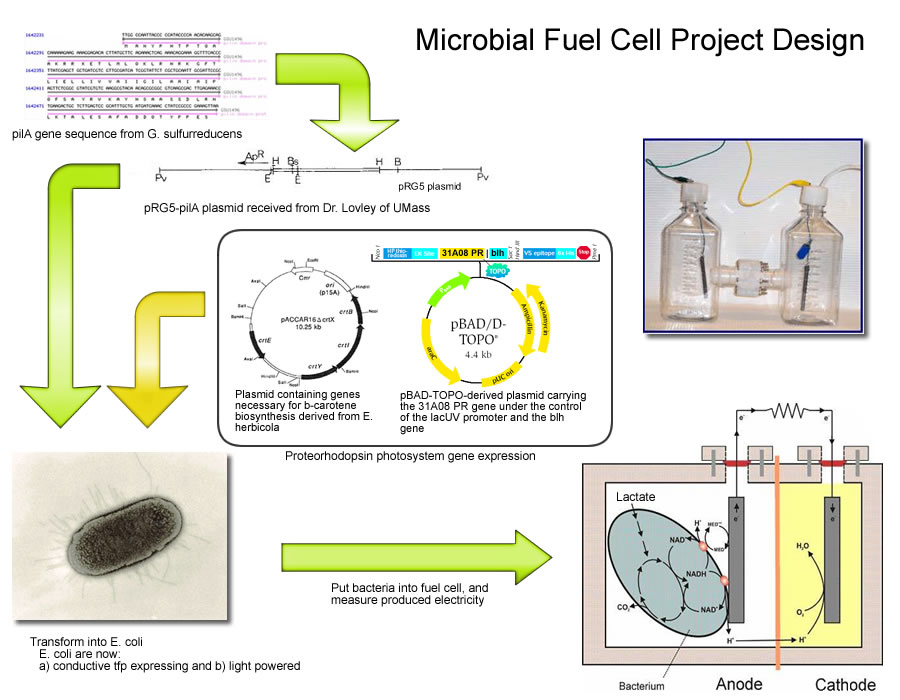Duke/Projects/fc
From 2007.igem.org
Contents |
Solar-powered bacterial fuel cell
Background
Microbial fuel cell technology represents one of the oldest sources of microbial energy today. However, due to recent discoveries and improvements in fuel cell design, it has been the recent focus of research in the laboratory. These fuel cells convert the high energy electron transfer of bacterial metabolism into electrical energy. Such a drainage of bacterias electron supply can adversely affect bacterial growth, for they utilize these electrons during the electron transport component of cellular respiration. Thus over time their production of usable energy is diminished and this in turn plays a role in curtailing the bacterias lifespan. This previously mentioned form of usable energy, ATP, is produced on the outer membrane of the bacteria by means of a proton pump, ATP synthase, which couples hydrogen ion transfer to the binding of ADP and a phosphate group. The goal of this experiment is to introduce another proton pump, a proteorhodopsin system, via a gene vector into Eschericia coli to serve as an additional proton pump to ATP synthase. Activated by light, this proton pump will serve as an additional source for the joining of ADP and a phosphate group, thus enabling the cell to produce more ATP. This increased production may provide the cells with more inherent energy and ultimately extend their lifespans in the solar cell.
Parts and setup
The design and setup of the solar-powered bacterial fuel cell is depicted below:
Results
The fuel cell is constructed and the bacteria ready but the results are pending.
